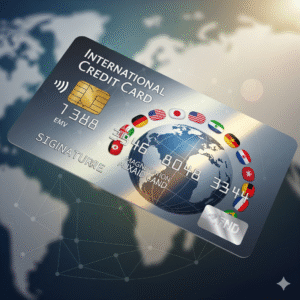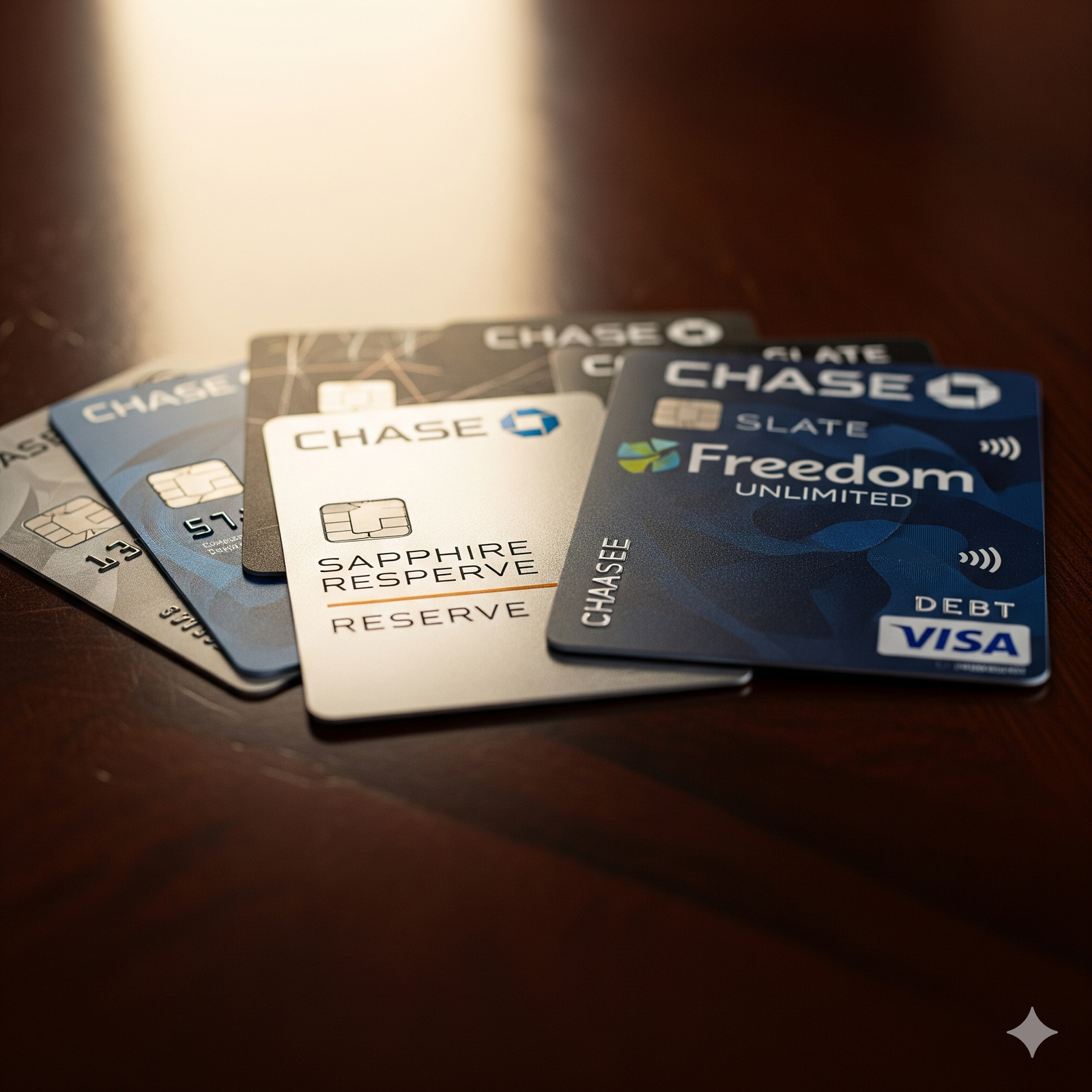In the world of personal finance, few questions are as common—and as debated—as this one: What is the ideal number of credit cards to have? Walk into any room and you’ll find a wide spectrum of answers. Some people swear by a single, simple card for everything. Others have wallets overflowing with plastic, each card optimized for a specific type of purchase.
Many financial beginners worry that having more than one card is a sign of irresponsibility, a slippery slope into debt. On the other hand, credit card enthusiasts, or “churners,” strategically open and close accounts to maximize rewards, often holding ten or more cards at a time.
So, what’s the right answer? The truth is, there is no magic number that works for everyone. The ideal number of credit cards for you depends entirely on your financial discipline, your spending habits, and your ultimate goals. This guide will break down the pros and cons of different approaches, helping you find the strategic sweet spot that maximizes your benefits while minimizing your risks.
The Case for Simplicity: Is One Credit Card Enough?

For someone just starting their credit journey or a minimalist who values simplicity above all else, having a single credit card can be a perfectly viable strategy. It’s the easiest approach to manage and can be a great way to build credit without feeling overwhelmed.
The Advantages of a Single Card:
- Effortless Management: With only one due date and one statement to track, the risk of missing a payment is significantly lower.
- Simplified Spending Tracking: All of your expenses are consolidated in one place, making it incredibly easy to budget and review your spending habits at the end of the month.
- Excellent for Beginners: If you’re new to credit, starting with one card allows you to learn the fundamentals—paying on time and in full—without unnecessary complexity. A good, no-annual-fee cashback card is often the perfect first step.
The Disadvantages of a Single Card:
- Single Point of Failure: What happens if your card is lost, stolen, or flagged for a fraudulent transaction? You could be left without access to credit when you need it most. Having a backup is a crucial part of a financial safety net.
- Limited Rewards Potential: No single credit card is the best for every spending category. By relying on one card, you’re inevitably leaving rewards on the table. Your “all-purpose” card might offer 1.5% cash back, but you could be earning 4% or 5% on groceries, dining, or gas with a different card.
- Credit Utilization Woes: Your credit utilization ratio—the amount of your available credit that you use—is a major factor in your credit score. If you have only one card with a $5,000 limit and you spend $2,000, your utilization is a high 40%. Spreading that same spending across two cards with $5,000 limits each would drop your overall utilization to a much healthier 20%.
The Sweet Spot: The Power of Having 2-4 Credit Cards
For the vast majority of people, the ideal number of credit cards lies between two and four. This range offers the perfect balance of maximized rewards, improved credit health, and manageable complexity. It’s the strategic core of a well-planned financial life.
Benefit 1: Creating a Powerful Rewards Strategy
This is where having multiple cards truly shines. You can build a small portfolio of cards that work together to maximize your earnings on every dollar you spend. This is often called the “card pairing” or “trifecta” strategy.
A classic example of a 3-card strategy:
- A Dining & Groceries Card: A card that offers high rewards (e.g., 4x points or 4% cash back) on your most common household expenses, like dining out and supermarket purchases.
- A Travel & Transit Card: A card that rewards you for travel-related spending, including flights, hotels, rideshares, and public transit.
- A Flat-Rate “Catch-All” Card: A simple, no-fuss card that offers a high flat rate (e.g., 2% cash back) on every other purchase that doesn’t fall into the high-value categories of your other cards.
With this setup, you’re no longer settling for a mediocre rewards rate. You’re strategically using the right tool for the right job, potentially earning hundreds of dollars more in rewards each year without changing your spending.
Benefit 2: Building a More Robust Credit Profile
Lenders like to see that you can responsibly manage multiple lines of credit. Having a few well-managed credit cards can positively impact your credit score in two key ways:
- Lowering Overall Credit Utilization: As mentioned earlier, more cards mean a higher total credit limit. As long as your spending stays consistent, this will significantly lower your credit utilization ratio, which can provide a nice boost to your credit score.
- Improving Your Credit Mix: While not the most important factor, having a healthy mix of credit accounts can be a positive signal to lenders.
Benefit 3: Establishing a Financial Safety Net
Life is unpredictable. A card can be declined for a variety of reasons—a fraud alert while traveling, a system outage at the bank, or reaching your credit limit. Having a backup card from a different issuer (and ideally, a different network like Visa or Mastercard) ensures you have a reliable payment method in an emergency.
The Expert Level: When Does Having 5+ Credit Cards Make Sense?

Venturing into the territory of five or more credit cards is for the dedicated financial hobbyist, the serious travel hacker, or the high-income spender who can manage significant complexity. At this level, the goal is elite optimization.
Who is this for?
- Travel Enthusiasts: These users will have co-branded airline and hotel cards to get specific perks like free checked bags, elite status, and free hotel nights, in addition to general travel rewards cards.
- Sign-Up Bonus Maximizers: A primary strategy at this level is “churning”—opening new cards primarily to earn lucrative welcome bonuses (e.g., “spend $4,000 in 3 months to earn 60,000 points”). This requires meticulous organization to track spending requirements and annual fees.
- Category Spenders: These users have a specific card for nearly every category: a card for gas, a card for streaming services, a card for Amazon purchases, and so on.
The Significant Risks:
- Mental Overload: Juggling numerous due dates, spending categories, and rewards programs can become a part-time job.
- Annual Fee Creep: Many high-reward cards come with annual fees. It’s easy for the total cost of these fees to outweigh the rewards you’re actually earning if you’re not careful.
- Temptation to Overspend: With tens of thousands of dollars in available credit, the temptation to spend money you don’t have can be immense. This level is only for those with ironclad financial discipline.
How Many Credit Cards is Too Many? Warning Signs to Watch For
Regardless of the number, you have “too many” credit cards the moment they start to negatively impact your financial health or mental well-being. Here are the red flags:
- You’re Carrying a Balance: If you can’t pay off every card in full every month, you have too many. The interest you’ll pay will almost always negate any rewards you earn.
- You’re Missing Payments: If you’re struggling to track due dates and are incurring late fees, you need to simplify.
- You’re Unsure Why You Have Each Card: If you have a card in your wallet and can’t immediately state its purpose in your strategy (e.g., “this is my gas card,” “this is my backup no-foreign-transaction-fee card”), it might be redundant.
- Your Credit Score is Dropping: Applying for too many cards in a short period will result in multiple hard inquiries, which can lower your score.
Does Opening and Closing Cards Affect Your Credit Score?

Yes, both actions can have an impact, which is why they should be done strategically.
- Opening a Card: When you apply for a new card, the lender performs a “hard inquiry” on your credit report, which can cause a small, temporary dip in your score (usually less than 5 points). The new account will also lower the average age of your credit history, another minor negative. However, the positive impact of a higher total credit limit and lower utilization often outweighs these negatives in the long run.
- Closing a Card: This can be more damaging. When you close a card, you lose its credit limit, which can cause your overall credit utilization to spike. If it’s an older account, you also risk lowering the average age of your credit history. General Rule: It’s almost always better to keep old, no-annual-fee credit cards open, even if you only use them for a small purchase once or twice a year to keep them active.
Your Perfect Number is a Personal Journey
Ultimately, the right number of credit cards is the number you can manage responsibly to achieve your financial goals.
- For the Beginner: Start with one great no-annual-fee card. Master it for 6-12 months.
- For the Average Consumer: Grow to a 2-4 card portfolio that maximizes rewards on your daily spending.
- For the Expert: Expand beyond that only when you have a clear, specific strategy and the discipline to execute it flawlessly.
Don’t compare the size of your wallet to anyone else’s. The goal isn’t to collect the most cards; it’s to build a strong credit history, avoid debt, and make your money work harder for you. Start small, be deliberate, and build a credit card strategy that perfectly fits your life.







